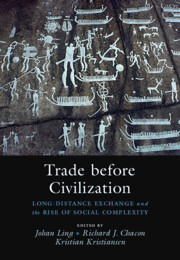Refine search
Actions for selected content:
23990 results in Ancient history
6 - ‘Public Confession’ in Palestinian Literary Self-narratives after the Second Intifada
-
-
- Book:
- Literary Representations of the Palestine/Israel Conflict after the Second Intifada
- Published by:
- Edinburgh University Press
- Published online:
- 07 June 2023
- Print publication:
- 31 August 2022, pp 107-127
-
- Chapter
- Export citation
Notes on Contributors
-
- Book:
- Literary Representations of the Palestine/Israel Conflict after the Second Intifada
- Published by:
- Edinburgh University Press
- Published online:
- 07 June 2023
- Print publication:
- 31 August 2022, pp vii-x
-
- Chapter
- Export citation
Part 1 - The Aesthetics of Occupation
-
- Book:
- Literary Representations of the Palestine/Israel Conflict after the Second Intifada
- Published by:
- Edinburgh University Press
- Published online:
- 07 June 2023
- Print publication:
- 31 August 2022, pp 11-12
-
- Chapter
- Export citation
10 - The Palestine/Israel Conflict in the Young Adult Anglophone Bildungsroman
-
-
- Book:
- Literary Representations of the Palestine/Israel Conflict after the Second Intifada
- Published by:
- Edinburgh University Press
- Published online:
- 07 June 2023
- Print publication:
- 31 August 2022, pp 184-199
-
- Chapter
- Export citation
Acknowledgements
-
- Book:
- Literary Representations of the Palestine/Israel Conflict after the Second Intifada
- Published by:
- Edinburgh University Press
- Published online:
- 07 June 2023
- Print publication:
- 31 August 2022, pp vi-vi
-
- Chapter
- Export citation
5 - The Israeli/Palestinian Conflict in To the End of the Land: Some Thoughts on David Grossman’s Hebrew in Translation
-
-
- Book:
- Literary Representations of the Palestine/Israel Conflict after the Second Intifada
- Published by:
- Edinburgh University Press
- Published online:
- 07 June 2023
- Print publication:
- 31 August 2022, pp 88-104
-
- Chapter
- Export citation
3 - American Palestinian Women as Public Intellectuals: New Narratives of Resistance
-
-
- Book:
- Literary Representations of the Palestine/Israel Conflict after the Second Intifada
- Published by:
- Edinburgh University Press
- Published online:
- 07 June 2023
- Print publication:
- 31 August 2022, pp 51-68
-
- Chapter
- Export citation
4 - The Palestinian Rebel: Liberty and Statehood in Literature
-
-
- Book:
- Literary Representations of the Palestine/Israel Conflict after the Second Intifada
- Published by:
- Edinburgh University Press
- Published online:
- 07 June 2023
- Print publication:
- 31 August 2022, pp 69-87
-
- Chapter
- Export citation
Frontmatter
-
- Book:
- Literary Representations of the Palestine/Israel Conflict after the Second Intifada
- Published by:
- Edinburgh University Press
- Published online:
- 07 June 2023
- Print publication:
- 31 August 2022, pp i-ii
-
- Chapter
- Export citation

Trade before Civilization
- Long Distance Exchange and the Rise of Social Complexity
-
- Published online:
- 25 August 2022
- Print publication:
- 15 September 2022
Biographical Notes
-
- Book:
- Strindberg and the Western Canon
- Published by:
- Jagiellonian University Press
- Published online:
- 16 July 2022
- Print publication:
- 21 August 2022, pp 265-269
-
- Chapter
- Export citation
Contents
-
- Book:
- Strindberg and the Western Canon
- Published by:
- Jagiellonian University Press
- Published online:
- 16 July 2022
- Print publication:
- 21 August 2022, pp 5-8
-
- Chapter
- Export citation
August Strindbergs I havsbandet och Victor Hugos Havets arbetare: Inspiration med modifikation
-
-
- Book:
- Strindberg and the Western Canon
- Published by:
- Jagiellonian University Press
- Published online:
- 16 July 2022
- Print publication:
- 21 August 2022, pp 153-164
-
- Chapter
- Export citation
Strindbergs Intima teatern, svensk dramatik och Sveriges Dramatikers Studio
-
-
- Book:
- Strindberg and the Western Canon
- Published by:
- Jagiellonian University Press
- Published online:
- 16 July 2022
- Print publication:
- 21 August 2022, pp 211-224
-
- Chapter
- Export citation
Tolle lege – några synpunkter på läsning i Inferno
-
-
- Book:
- Strindberg and the Western Canon
- Published by:
- Jagiellonian University Press
- Published online:
- 16 July 2022
- Print publication:
- 21 August 2022, pp 91-100
-
- Chapter
- Export citation
”The Life of the Mind.” Den kreativa processen i Stanislav Barabáš’ Inferno och bröderna Coens Barton Fink
-
-
- Book:
- Strindberg and the Western Canon
- Published by:
- Jagiellonian University Press
- Published online:
- 16 July 2022
- Print publication:
- 21 August 2022, pp 245-256
-
- Chapter
- Export citation
Frontmatter
-
- Book:
- Strindberg and the Western Canon
- Published by:
- Jagiellonian University Press
- Published online:
- 16 July 2022
- Print publication:
- 21 August 2022, pp 1-4
-
- Chapter
- Export citation
Strindberg and Misogyny in Theatre
-
-
- Book:
- Strindberg and the Western Canon
- Published by:
- Jagiellonian University Press
- Published online:
- 16 July 2022
- Print publication:
- 21 August 2022, pp 225-230
-
- Chapter
- Export citation
”Klostret i Lhassa liknar dessa molnborgar”. Öst möter Väst i Ockulta dagboken
-
-
- Book:
- Strindberg and the Western Canon
- Published by:
- Jagiellonian University Press
- Published online:
- 16 July 2022
- Print publication:
- 21 August 2022, pp 39-50
-
- Chapter
- Export citation
”Marie Grubbe var en vision, men Nils Lyhne var söndrig.” Strindberg and J. P. Jacobsen
-
-
- Book:
- Strindberg and the Western Canon
- Published by:
- Jagiellonian University Press
- Published online:
- 16 July 2022
- Print publication:
- 21 August 2022, pp 165-178
-
- Chapter
- Export citation
